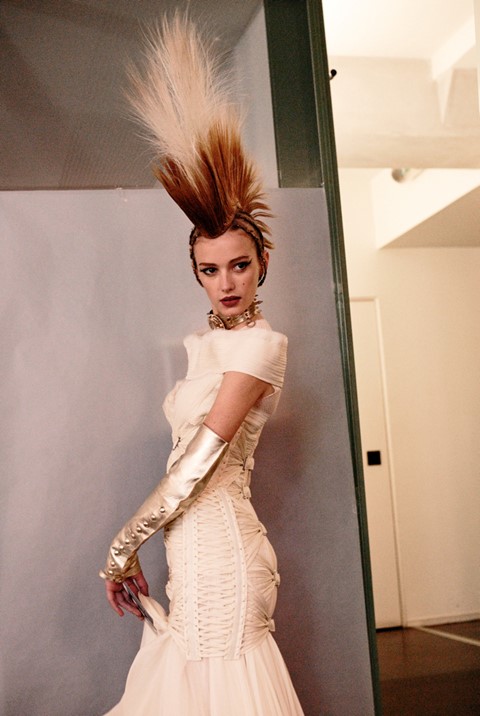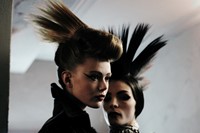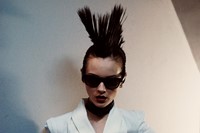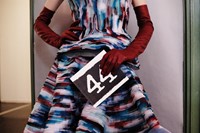The Paris couture shows can go one of two ways: they either offer designers a chance to plunder the outermost limits of their creativity and passion, or they are an exclusive, elegant and exuberant stage upon which to show the fundamentals of a
The Paris couture shows can go one of two ways: they either offer designers a chance to plunder the outermost limits of their creativity and passion, or they are an exclusive, elegant and exuberant stage upon which to show the fundamentals of a label, to crack the code of its DNA at the most opulent and luxurious level. Where the designer herding instinct often means they all choose either the former or the latter, for spring/summer 2011, there was a mixture of both.
John Galliano gazed at Dior’s heritage and showed New Look-line dresses and skirt suits, eschewing the Belle Epoque aesthetic that he has been tinkering with recently. Forties-style taffeta capes encompassed full skirts and boned bodices; full-length dresses came in the familiar A- and H-line silhouettes made so familiar to the fashion eye by the house’s illustrious founder.
At Chanel too the emphasis was on the label’s central message of discreet and functional luxury, with simple shift dresses frosted with gnarled branch-like patterns in crystal, and tunics and jacket rendered in signature boucle wool.
The signature was all but rewritten at Armani Prive meanwhile, where precise and regulated tailoring gave way to a sterner, curvilinear geometry, with side-sweeping cutaway dresses, space age shoulder pads and heavy gemstones-embellished tops. The razor-sharp cuts were topped off with flying saucer hats, in a departure from the usual pragmatism of an Armani catwalk. Perhaps dressing Lady Gaga has influenced the Italian master of understatement.
No such subtlety at Valentino, however, where butterflies adorned chokers, tiered silk chiffon skirts fell to the floor and light coats were trimmed with turquoise stranded feathers. The opening phase of the show presented a more subdued range of light chiffon separates in pale pastels and neutrals, but these were carefully flashed through with gowns in the archetypal shade of Valentino crimson.
Riccardo Tisci was another designer to play with neutrals at Givenchy, where sheer chiffon gowns continued his recent feel for translucence and showed off the house’s great craftsmanship with filigreed ivory beading and heavy ornamentation, topped off with neon panelling on the yokes and back panels. What looked from the from like a Victorian nightdress became from behind a glitzy space-age warrior gown, inspired — so Tisci said — by Japanese cartoon culture. That explains the robo-lobster helmets, then.
And finally, Jean Paul Gaultier took inspiration from an altogether more earthy source: a punked version of the Moulin Rouge. He presented a whirlwind of a collection that culminated in a scarlet-haired model dancing the can-can along the catwalk. France’s enfant terrible showed yet more chiffon, full length and frothed up with tulle, as well as hallucinogenic prints and gowns based around the architecture of corsetry. With beauty spots, heavy lids and primped Mohawks, models embodied the sort of trashy burlesque dancers you might find in the soupy environs of a post-apocalypse Paris. Which is about as far as possible from the rather fragrant world of haute couture — Gaultier’s point entirely, of course.
Text by Harriet Walker



